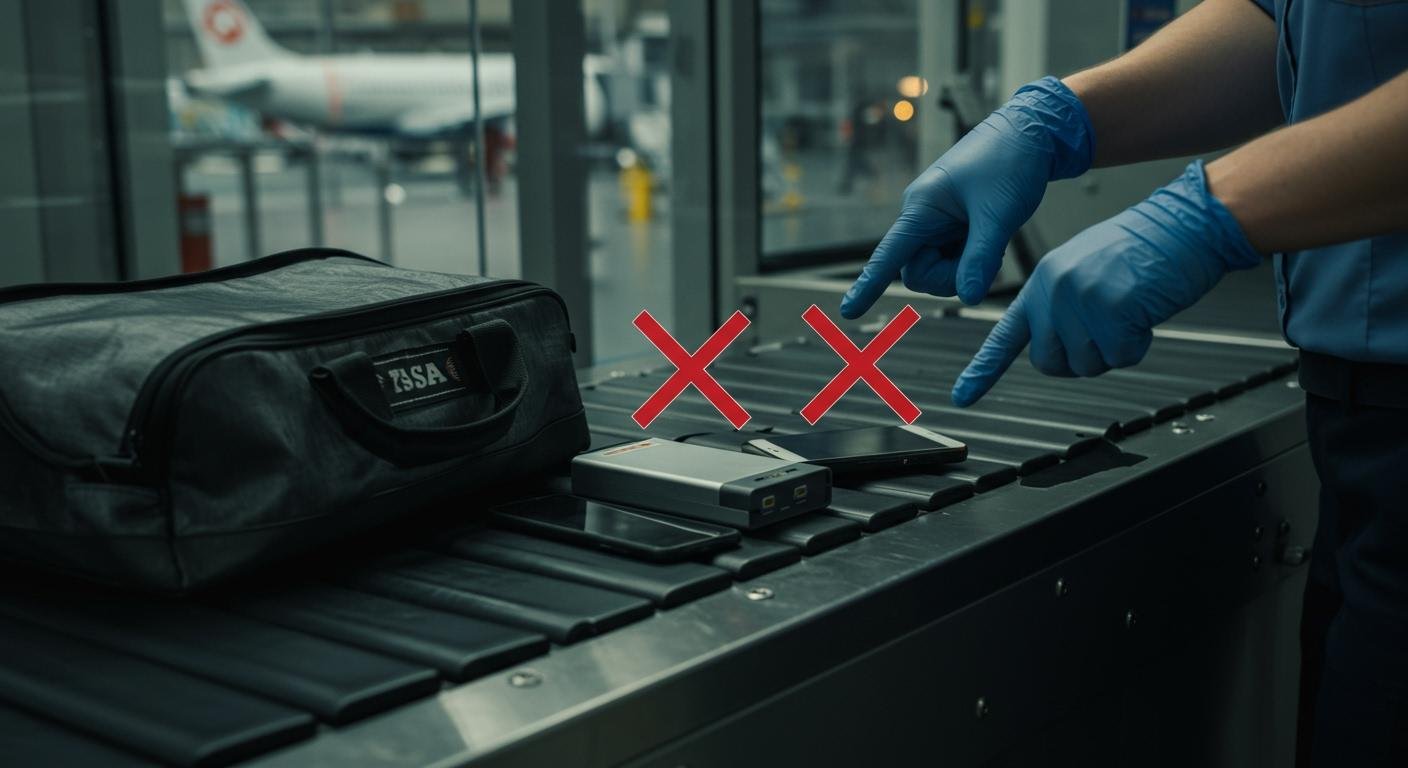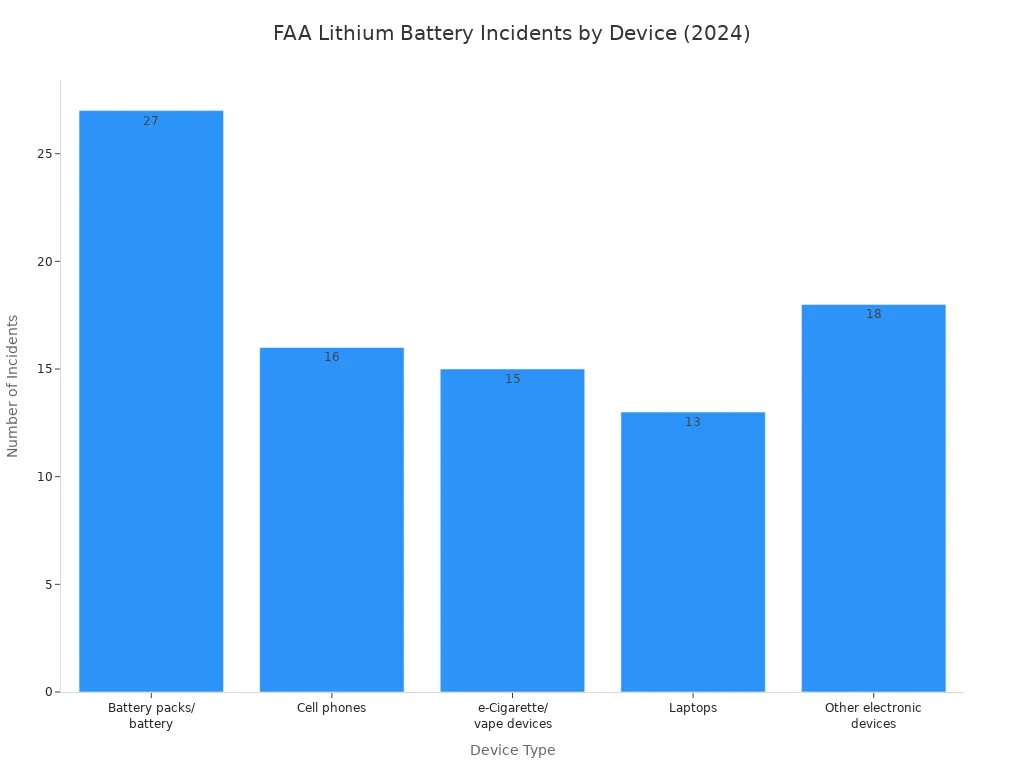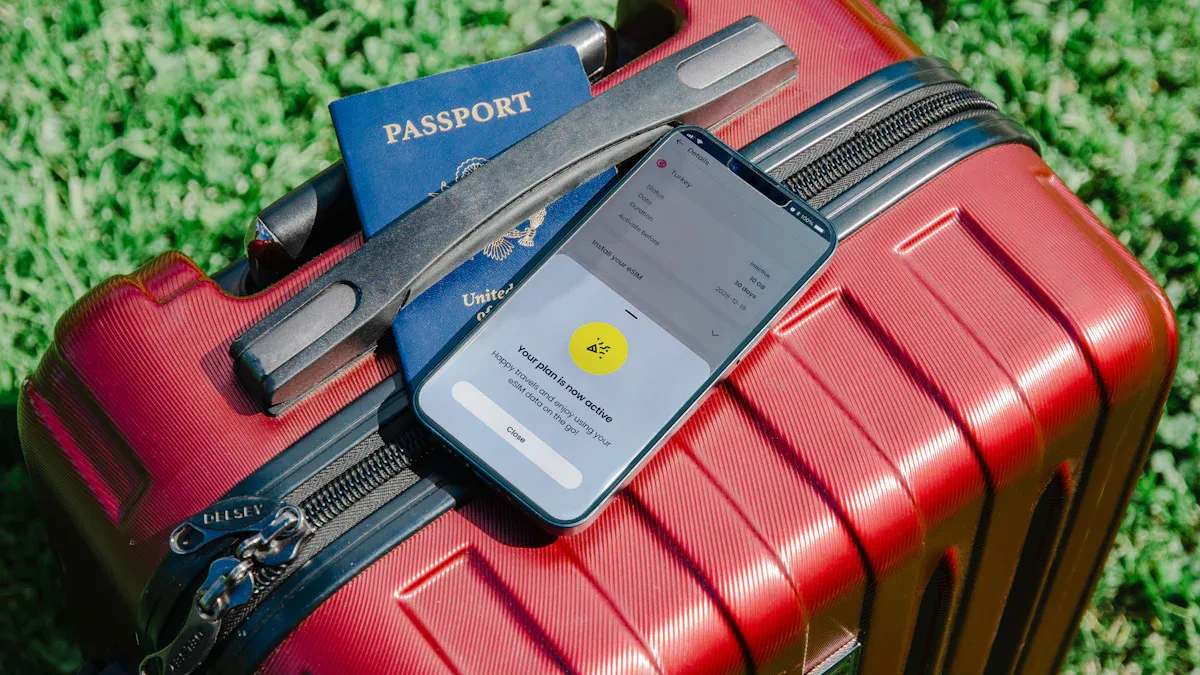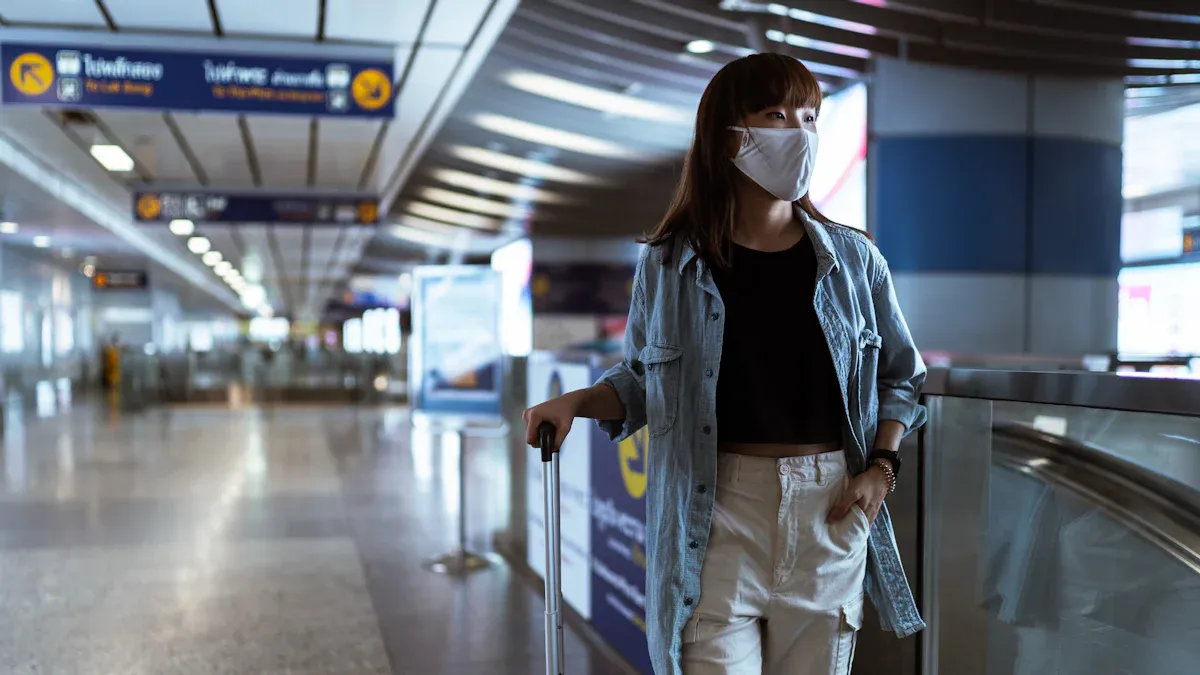
Let’s begin with the single most important rule for li-polymer battery air travel restrictions.
All spare Li-Polymer and Lithium-Ion batteries, including power banks, are strictly forbidden from checked luggage. You must pack them in your carry-on luggage.
These safety guidelines are critical. Surprisingly, 45% of travelers incorrectly believe they can pack spare batteries in checked bags. The restrictions exist because of fire risk; the FAA verified 89 incidents in 2024 involving lithium-ion batteries on aircraft. Batteries inside devices have different air travel rules, but keeping devices in your carry-on is the best practice for safety.

These guidelines help ensure a safe flight for everyone.
Core Li-Polymer Battery Air Travel Restrictions
Understanding the core li-polymer battery air travel restrictions is simple. The rules focus on one main idea: keeping spare batteries out of the cargo hold. “Spare” batteries include power banks, external battery packs, and any uninstalled li-polymer batteries for your camera, drone, or other devices. These guidelines exist for your safety and the safety of everyone on board.
Carry-On Luggage Allowances
You must place all spare lithium-ion batteries in your carry-on bag. This rule allows the flight crew to respond quickly if an issue occurs. You also need to protect these batteries from damage and short circuits. A short circuit can happen if the battery terminals touch metal objects like keys, coins, or even another battery. Proper protection is a key part of safety and fire prevention.
Pro Tip: Always prepare your spare batteries for your carry-on before you leave for the airport. This simple step saves you time and stress at the security checkpoint.
To protect your batteries and reduce fire risk, you should follow these official air travel rules:
- Place each battery in its own protective case or plastic bag.
- Use the manufacturer’s original packaging when possible.
- Cover the battery’s terminals with non-conductive tape (like electrical tape).
- Keep your batteries separate from metal items in your carry-on luggage.
The Absolute Prohibition in Checked Luggage
You must never pack spare li-polymer batteries or power banks in your checked luggage. This is a strict, non-negotiable rule. The reason for this ban involves serious fire hazards. The number of incidents involving lithium-ion batteries has risen significantly, prompting tighter restrictions. A fire in the passenger cabin can be managed by the crew. A fire in the cargo hold is much more dangerous.
Scientific studies show why the risk is higher in the cargo hold. The lower air pressure in an aircraft’s cargo area can cause lithium-ion batteries to fail sooner than at normal pressure. This pressure difference can make the battery shell rupture, which greatly increases the fire hazard. These conditions make a fire in checked bags difficult to detect and extinguish. Following the li-polymer battery air travel restrictions for checked luggage is essential for overall flight safety.
Rules for Batteries Inside Your Devices

The rules for devices with built-in lithium-ion batteries are different from the rules for spare batteries. This includes your laptop, phone, tablet, and camera. The Federal Aviation Administration (FAA) strongly advises you to keep these electronics in your carry-on. This practice improves safety for everyone on the flight. If an issue with a lithium-ion battery occurs, the cabin crew can respond immediately.
Packing Devices in Carry-On Bags
You should pack your personal electronic devices in your carry-on bag for easy access during security screening. The TSA has specific guidelines to help you move through the checkpoint smoothly.
- Pack large electronics, like laptops and tablets, on the top layer of your bag. This makes them easy to remove.
- You must take any device larger than a cell phone out of your bag. Place it in a bin by itself for X-ray screening.
- Travelers with TSA PreCheck® do not need to remove laptops or other electronics from their bags.
✈️ Gate-Check Tip: Sometimes you must check your carry-on at the gate. If this happens, the FAA advises you to remove all devices powered by lithium-ion batteries. You must keep your phone, laptop, vape, and power banks with you in the aircraft cabin.
Conditions for Checked Bags
You can pack devices with lithium-ion batteries in your checked luggage, but it is not recommended. If you must place these items in a checked bag, you have to follow strict air travel rules. These restrictions exist to reduce fire risk in the cargo hold.
To pack electronics in checked luggage, you must meet these three conditions:
- Completely Power Down the Device: The device must be fully turned off. Sleep mode or hibernation mode is not enough. This prevents the device from generating heat.
- Protect from Accidental Activation: You must ensure the device cannot turn on by accident. Packing it in a hard case or surrounding it with soft clothing can help prevent buttons from being pressed.
- Prevent Damage: Pack the device securely to protect it from damage during handling. Damaged batteries pose a significant safety risk.
Following these rules for checked devices is a critical part of overall flight safety.
Understanding Watt-hours for Lithium-Ion Safety
The TSA uses Watt-hours (Wh) to measure a battery’s capacity. This unit helps determine the rules for your devices. Most manufacturers print the Wh rating directly on the battery. If not, you can calculate it yourself.
How to Calculate Watt-hours (Wh): You can find the Watt-hours of a lithium-ion battery with a simple formula.
(Milliamp-hours (mAh) × Volts (V)) ÷ 1,000 = Watt-hours (Wh)For example, a 2,942 mAh phone battery at 3.7V has a rating of 10.9 Wh.
Knowing your battery’s Wh rating is essential for following the li-polymer battery air travel restrictions.
Batteries Under 100 Wh
Most of your personal electronics use lithium-ion batteries under 100 Wh. These are the most common batteries you will travel with. Common devices in this category include:
- Cell phones and tablets
- Laptop computers
- Digital cameras
- Power banks and portable chargers
You can bring these devices in your carry-on or checked bags. However, you must pack all spare li-polymer batteries in your carry-on luggage. The TSA allows up to 20 spare batteries per person, but some airlines have stricter limits. Always check your airline’s specific guidelines.
Batteries Between 101-160 Wh
Larger lithium-ion batteries, rated between 101-160 Wh, have tighter restrictions. These powerful batteries are often found in professional audio/visual equipment or extended-life laptop batteries. You need airline approval before bringing these on a flight. With approval, you can carry a maximum of two spare li-polymer batteries in your carry-on bag. These larger batteries are never allowed in checked luggage.
Limits for Spare Li-Polymer Batteries
The rules for spare lithium-ion batteries focus on safety. You must carry all spares with you in the cabin. Batteries over 160 Wh are forbidden on passenger aircraft. The only exception is for certain mobility devices, which have their own specific rules. Following these quantity and placement limits is a key part of overall flight safety.
Special Rules for Smart Bags

Smart bags with built-in chargers are convenient, but they come with specific rules. The most important factor for these bags is whether you can remove the lithium-ion power bank. This single detail determines if you can bring your bag on a flight.
Removable vs. Non-Removable Batteries
The rule for smart bags is simple and strict. Your bag is only allowed on a flight if its battery is removable. If you cannot remove the battery, you cannot bring the bag on the plane at all.
Important : Airlines ban smart bags with non-removable batteries. This applies to both carry-on and checked luggage. The Watt-hour rating does not matter if the battery is permanently installed.
Major U.S. carriers, including American Airlines, Delta, and United, enforce this ban without exception. This policy became necessary after some early smart bag models posed a fire risk. For example, the brand Bluesmart made bags with non-removable batteries, which are now prohibited from air travel. In contrast, brands like Away and Raden designed their bags with easily removable power banks to comply with safety regulations. Before you buy or pack a smart bag, you must confirm that you can take the battery out.
Transporting Removed Batteries
If your smart bag’s battery is removable, you can travel with it. However, you must follow a specific procedure, especially if you need to place the bag in checked luggage. If your bag is checked at the counter or the gate, you must remove the power bank. The removed battery must then travel with you in the cabin.
Once you remove the battery, it is treated just like any other spare power bank. You must follow all the standard safety restrictions for spare lithium-ion batteries.
- You must place the battery in your carry-on bag.
- You need to protect the battery’s terminals from a short circuit. You can use tape, a plastic bag, or its original case.
- The battery must comply with the airline’s Watt-hour limits, which is typically under 100 Wh.
Following these steps ensures your smart bag and its power source travel safely.
Following li-polymer battery air travel restrictions ensures a safe flight. Remember these key safety rules for your lithium-ion batteries.
- Spare Batteries: You must pack all spare li-polymer batteries and power banks in your carry-on luggage.
- Protect Terminals: You should cover battery terminals to prevent short circuits.
- Know Your Wh: Check the Watt-hour rating of your lithium-ion batteries.
- Checked Devices: You must completely power down any electronics in checked luggage.
Final Check: Always review the specific guidelines from your airlines before you travel. Airlines often have stricter air travel rules than the TSA, and non-compliance can lead to fines. Following these restrictions helps everyone fly safely.
FAQ
Can I bring a power bank in my checked bag?
No. You must never pack power banks or any spare lithium batteries in your checked luggage. You must place them in your carry-on bag for safety. This rule is strict and helps prevent fires in the cargo hold.
How many spare batteries can I bring?
For most batteries under 100 Wh, you can bring a reasonable quantity for personal use. The TSA suggests up to 20 spares. However, you should always check your airline’s specific policy, as they often have stricter limits than the TSA.
What if my device is in a bag I must gate-check?
If you must gate-check your carry-on bag, you must remove all your electronic devices and power banks. You need to keep these items with you in the aircraft cabin to ensure flight safety.
Are damaged or recalled batteries allowed? swollen_battery:
No. You cannot travel with damaged, swollen, or recalled lithium batteries. These items pose a significant fire risk. Airlines and the TSA forbid them from both carry-on and checked luggage to protect everyone on board.

